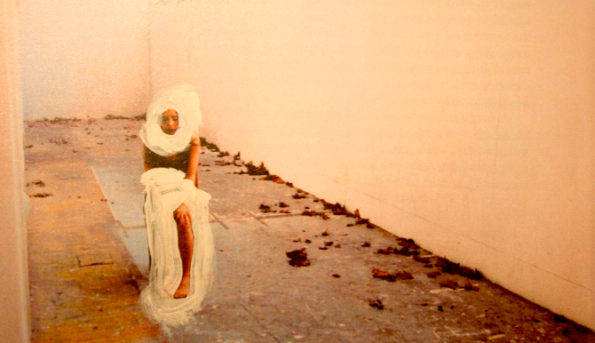Search
To search for an exact match, type the word or phrase you want in quotation marks.
A*DESK has been offering since 2002 contents about criticism and contemporary art. A*DESK has become consolidated thanks to all those who have believed in the project, all those who have followed us, debating, participating and collaborating. Many people have collaborated with A*DESK, and continue to do so. Their efforts, knowledge and belief in the project are what make it grow internationally. At A*DESK we have also generated work for over one hundred professionals in culture, from small collaborations with reviews and classes, to more prolonged and intense collaborations.
At A*DESK we believe in the need for free and universal access to culture and knowledge. We want to carry on being independent, remaining open to more ideas and opinions. If you believe in A*DESK, we need your backing to be able to continue. You can now participate in the project by supporting it. You can choose how much you want to contribute to the project.
You can decide how much you want to bring to the project.

With highly illustrative pieces and strategies that went from documentary to the subjective, with at times playful touches, the 1.0 VAD, Video and Digital Arts Girona Festival gguarantees the dispensing of different attitudes and connections, from the “highbrow”, to the “lowbrow”, distinguished or banal, public and private. Bearing a standard that since 2008 has promised to “refine the selection”, this last edition of VAD has been a homage to the last ten years of the event, and beyond the imperfections of human beings, that can appear with so many names, the show that received the visitor in the Casa de Cultura in Gerona fulfilled its promise
If its director, Nuria Font, had appeared to be carried away by a “coup de foudre”, once we interviewed her we knew that it had not been an emotional selection so much as one motivated by research, experience and rigorous examination. Firstly it wasn´t an open call, as it was up until 2008 where the large quantity of works ended up overwhelming the spectator, but a curatorial proposal based on what had been learnt after all these years, a “special” edition, as Nuria herself stated: “a programme that has been nourished by what we have experienced” and that, “faced with the impossibility of considering the totality of what we have presented up until now, of selecting between the more than 1,200 works that have been seen over the last few years, of valuing properly the more than 800 artists who have given their name to the works shown and to the shows presented,(…) We decided to invite 10 artists who had been present in several editions, who are still working with a strong author’s mark and of whom we could present new work”. The selection criteria ensured that these 10 chosen artists had participated to great effect in previous editions, but who also remained actively experimenting, technically and conceptually, and who were capable of delivering a presentation of innovative pieces in which one could sense the pulse of the here and now.
In the pieces one notices a range of tensions and subject matters, from a video game by the artist Manel Bayo, where the spectator is presented with the possibility of eliminating the contemporary art works of Girona, the room Giftmatón by Beatriz Sánchez that seemed like a scene from a recurring fantasy (including a furry monkey mask), the game and animation by Juan Domingo Ferris, which through an informal and suggestive graphic aims to nurture the hatred of city dwellers and make it explode in the public arena. Fear seen by Dionis Escorsa that is transformed into a transcendental experience, with a cinematographic style and narrative that makes us move within three simultaneous realities, the urban expansion of Jacobo Sucari (my preference for the historical connotations), where the documentary is fully exploited to unite different threads of the space with those of past, present and future, and lastly in a different register, the pretty piece titled Swing by Bettina Hoffmann, of an intensity that highlights the fragment, tensions and silence.
The clearly defined spaces converted each piece into a self-sufficient world capable of drawing the spectator into very varied experiences. In some cases the work’s connection with a physical locality or ideas that marked a specific community stood out, so the wink at local events or feelings managed to demonstrate a link, though without distancing the spectator. Among the events accompanying the Festival it’s worth highlighting a cycle of projections dedicated to the director Magali Charrier whose videos appear to be a chronicle of domestic and subjective events that seek new relations with our more everyday and familiar references.
My finale (that ought to have been the beginning according to the order of the programme) was the piece BLAUS by Eloi Maduell, Álex Posada and Santi Vilanova, where the technique was aimed at creating what the authors themselves described as immersive effects. From the care taken with all the details, from the modelling of the space, its volumes and geometric forms, to the acoustic levels, the existing frequencies and reverberations, the result was a piece of grandiloquent audio-visual contrasts. BLAUS evidenced the years of experimentation with original audio-visual instruments, that stem from hardware and software designs created specially for specific shows and on this occasion employed a combination of light and electronic sound to explore a whole atmosphere of relations and contrapositions between the laser installation and the humid walls of the ancient giant cistern of the Museu d´Història in Gerona.
At this point in time, when each discouraging bit of news about the crisis and the cuts seems to undermine the desire to investigate and capacity to experiment, it was worth making the trip to Gerona to see the Festival. It’s a shame that the concentration and grandiloquence of events in Barcelona frequently diminishes the visibility and importance of what takes place beyond it and we forget the possibility of escaping, even if it is only temporally.

Mabel is convinced that everything is constructed in accord with norms that regulate the way we do things: identity, patterns of social behaviour, public membership, or the paradigms that govern artistic and curatorial practices. She thinks that developing a profoundly critical sense about everything we do leads us to question up to what point we are prepared to question these patterns and rules, even if it is only to enter into other schemata.
"A desk is a dangerous place from which to watch the world" (John Le Carré)